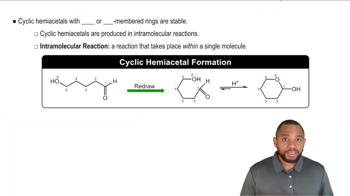Draw a structure for a compound that meets each of the following descriptions:
A cyclic alpha-hydroxyketone, C₅H₈O₂
 Verified step by step guidance
Verified step by step guidance Verified Solution
Verified Solution



 :39m
:39mMaster IUPAC Rules for Naming Ketones Concept 1 with a bite sized video explanation from Jules Bruno
Start learning